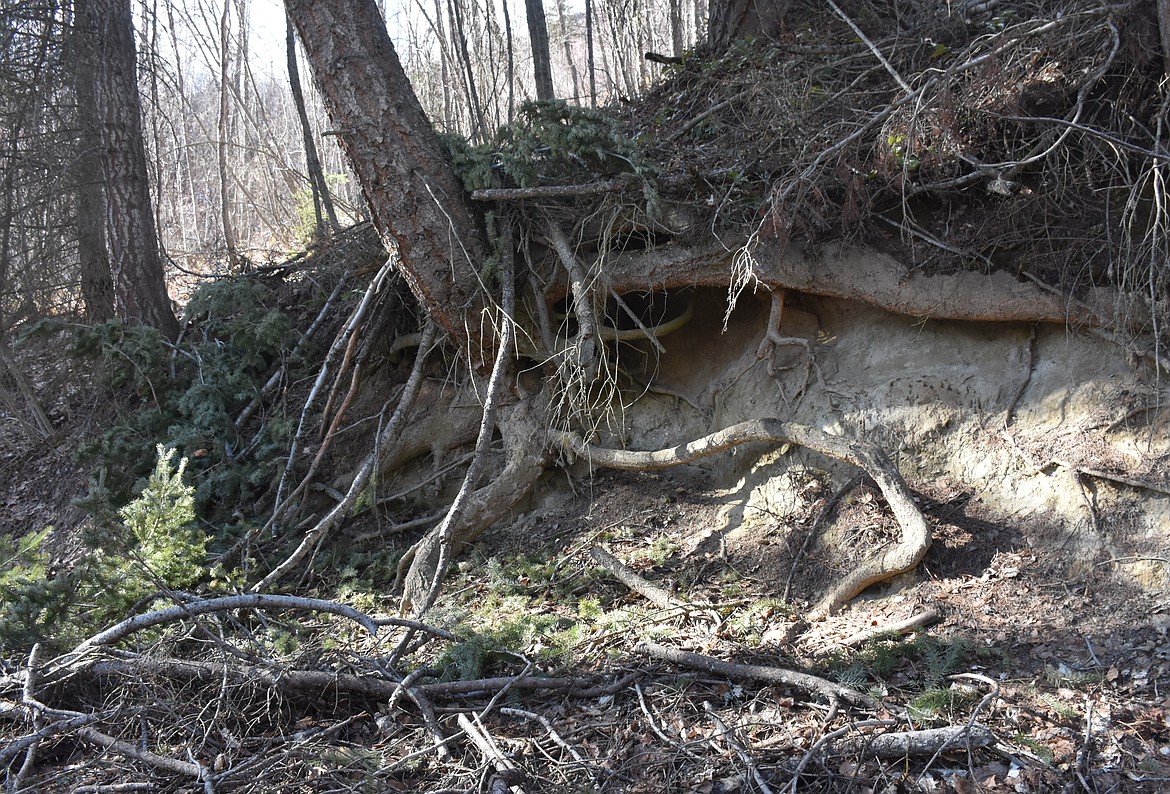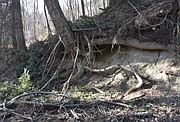Tree roots serve many purposes
BILL BULEY | Hagadone News Network | UPDATED 5 years, 9 months AGO
Bill Buley covers the city of Coeur d'Alene for the Coeur d’Alene Press. He has worked here since January 2020, after spending seven years on Kauai as editor-in-chief of The Garden Island newspaper. He enjoys running. | March 19, 2020 1:00 AM
“When the roots are deep there is no reason to fear the wind.”
— African proverb
Last week I drove up the Myrtle Creek road to check on some ponderosa pine and Douglas fir trees that I thought would topple over this last winter from the hard winds and exposed roots due to erosion.
Remember the winds we had last fall and winter, and the pine trees that were bent over? Some snapped and some came toppling down roots and all. Most trees survived minus a few limbs thanks to their extensive root system.
I saw several trees that had survived the winter, but their roots were exposed and they are at risk. We don’t tend to think about roots until we see them exposed while tilling a garden or when trees blow down in the forest. But without roots there wouldn’t be trees.
Tree roots serve a variety of purposes. In addition to the obvious role of anchoring a tree in the soil, roots absorb minerals and water, conduct water and nutrients, and store food. There are two basic types of roots, woody and nonwoody. Non-woody roots are found mostly in the upper few inches of soil. The primary function of these roots is to absorb water and nutrients.
Unlike the trunk that grows upward, roots tend to grow outward because most nutrients and oxygen are near the soil’s surface. Most of a tree’s roots are located within the top six to 24 inches of soil to maximize the absorption of water, oxygen and minerals.
The big, woody tree roots that are often exposed around the base of the tree aren’t the roots absorbing water; instead they are anchoring the tree. The absorption of water, oxygen and minerals happens through the smallest roots and root hairs.
Water mostly enters a tree through the roots by osmosis and any dissolved mineral nutrients will travel with it upward through the inner bark’s xylem (using capillary action) and into the leaves. These traveling nutrients then feed the tree through the process of leaf photosynthesis. Root hairs are located just behind the root tip and are basically outgrowths of single cells. They may live for a few weeks to a few years.
The large tree roots do more than anchor the tree, they also store food. At one point, those large roots were small and absorbed water and nutrients. Over time they grew much like a branch, becoming thicker toward the trunk and smaller away from it. Unlike branches, roots have no branching pattern. The shape of the root system is dependent on moisture, oxygen, soil texture and obstacles such as rocks and other tree roots. White-bark pine growing on a rocky ridge with minimal soil have a completely different root system shape than a ponderosa pine growing in sandy soil.
Most roots occupy an area two to four times the diameter of the tree’s crown. The root hairs greatly increase the surface area of the root system which helps in the absorption of more water and nutrients.
A lot more is happening beneath the surface than we tend to think. But all that root growth is appreciated when a big wind storm comes along.
Enjoy the forest and trees, they are deeply rooted in Boundary County.
ARTICLES BY BILL BULEY

CDA woman hears, feels tree come down on home
CDA woman hears, feels tree come down on home
Shaken, but OK, Kay was relieved the damage wasn’t worse. She has family around for help and said while the home had no power, it was livable.

Post 143 commander says 'Be The One' will save veteran lives
Post 143 commander says 'Be The One' will save veteran lives
Post 143 has an obligation to get involved, Shaw said. “We're trying to do something about it,” he said.

A mother's words, and love, echo in time
If I am quiet for a moment, I can hear her voice and I have to chuckle because her words were not always calm, sweet and reassuring. Oh, not that she was mean. She was just speaking her mind and yes, wanted to have a little fun at the expense of those she loved.



